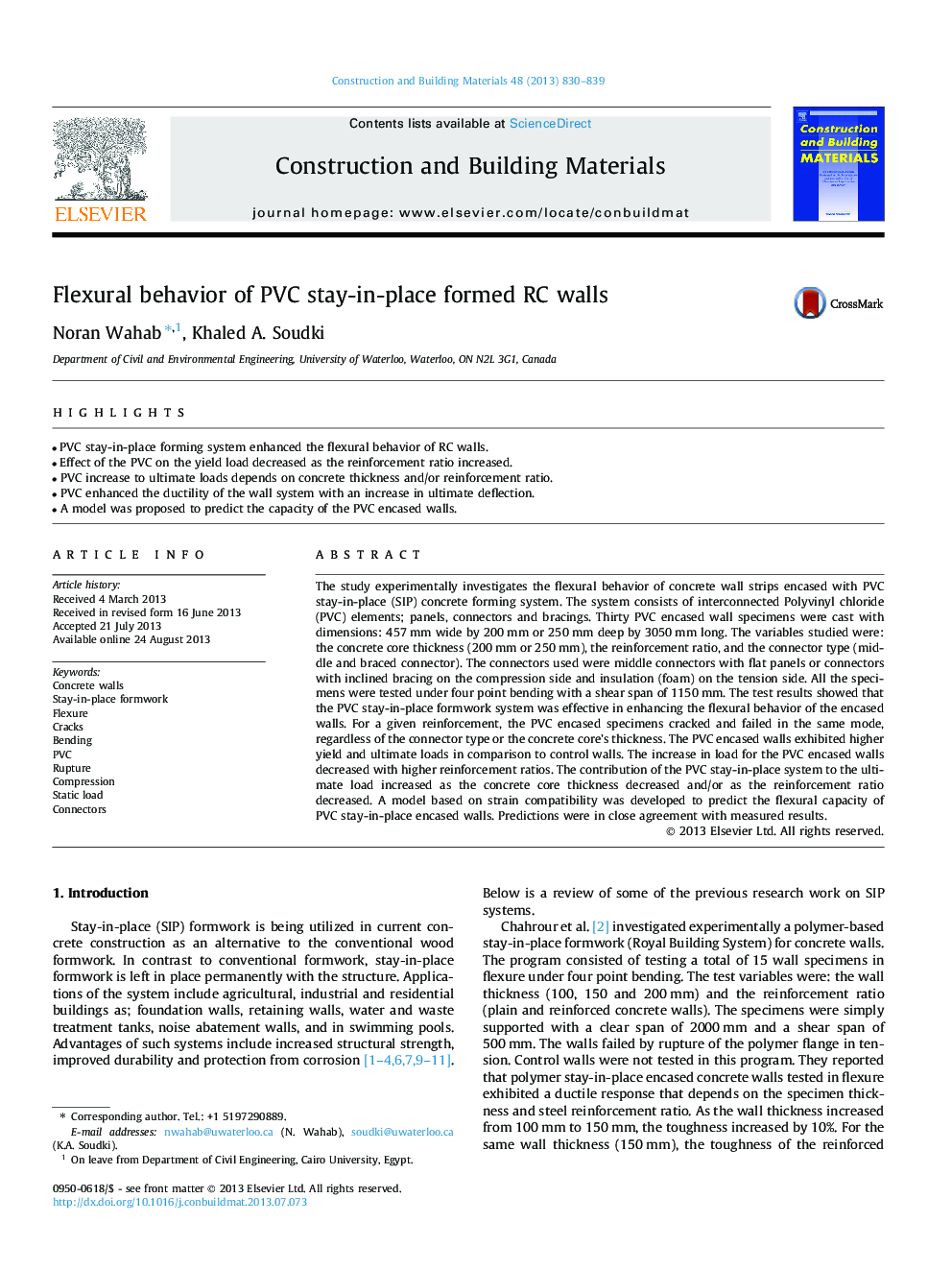| Article ID | Journal | Published Year | Pages | File Type |
|---|---|---|---|---|
| 6725941 | Construction and Building Materials | 2013 | 10 Pages |
Abstract
The study experimentally investigates the flexural behavior of concrete wall strips encased with PVC stay-in-place (SIP) concrete forming system. The system consists of interconnected Polyvinyl chloride (PVC) elements; panels, connectors and bracings. Thirty PVC encased wall specimens were cast with dimensions: 457Â mm wide by 200Â mm or 250Â mm deep by 3050Â mm long. The variables studied were: the concrete core thickness (200Â mm or 250Â mm), the reinforcement ratio, and the connector type (middle and braced connector). The connectors used were middle connectors with flat panels or connectors with inclined bracing on the compression side and insulation (foam) on the tension side. All the specimens were tested under four point bending with a shear span of 1150Â mm. The test results showed that the PVC stay-in-place formwork system was effective in enhancing the flexural behavior of the encased walls. For a given reinforcement, the PVC encased specimens cracked and failed in the same mode, regardless of the connector type or the concrete core's thickness. The PVC encased walls exhibited higher yield and ultimate loads in comparison to control walls. The increase in load for the PVC encased walls decreased with higher reinforcement ratios. The contribution of the PVC stay-in-place system to the ultimate load increased as the concrete core thickness decreased and/or as the reinforcement ratio decreased. A model based on strain compatibility was developed to predict the flexural capacity of PVC stay-in-place encased walls. Predictions were in close agreement with measured results.
Keywords
Related Topics
Physical Sciences and Engineering
Engineering
Civil and Structural Engineering
Authors
Noran Wahab, Khaled A. Soudki,
